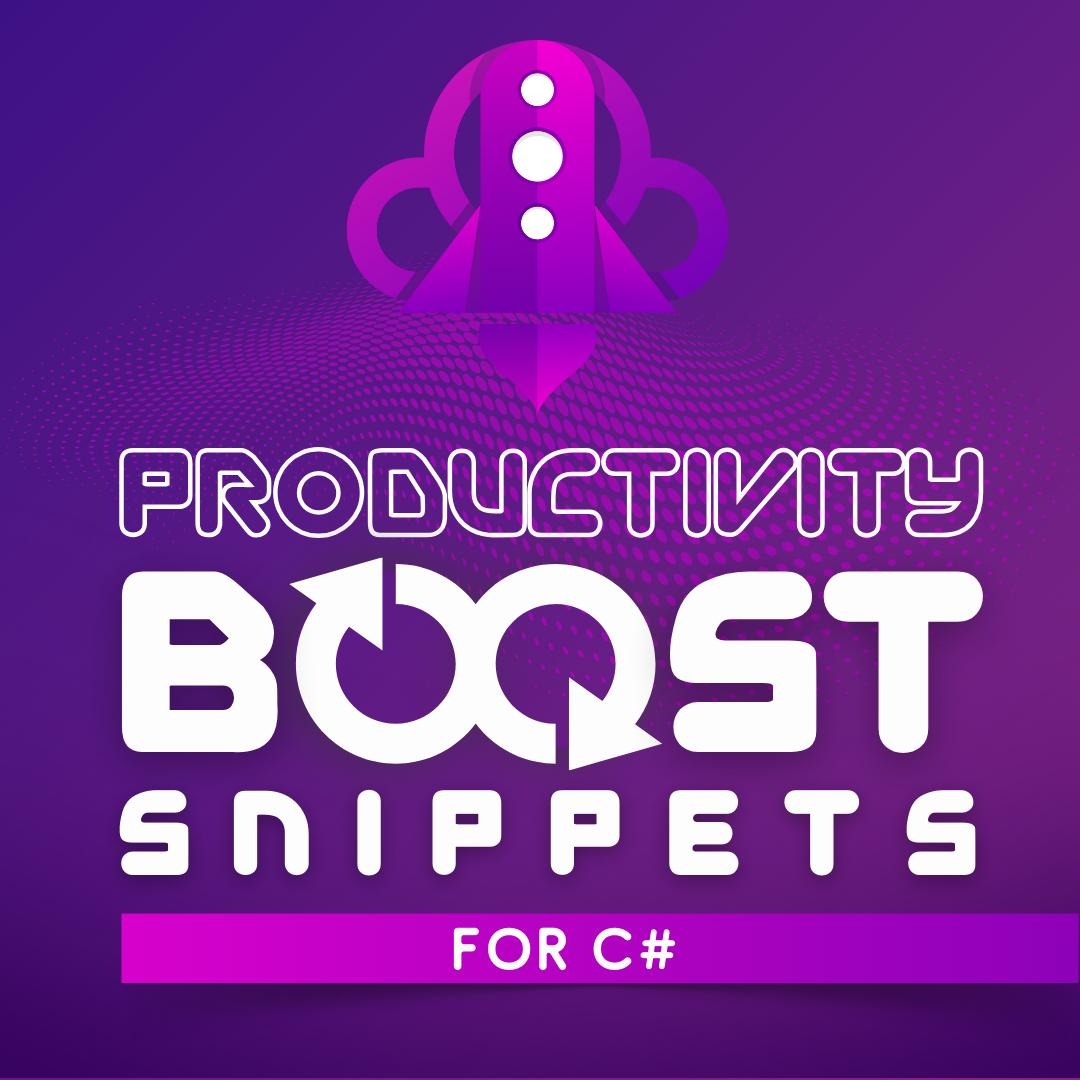Github Actions for Visual Studio Extension developers

I discovered the power of Roslyn over three years ago and since then I’ve developed three Visual Studio extensions and a couple of code analyzers. Because I work on those tools only in my free time, the word “time” is a key here, so automation really matters. So far I’ve been using AppVeyor for building and testing my extensions. However, I’m a huge fan of integrated solutions because they require much less work for setup, and since GithubActions became generally available I wanted to give it a try.
Automate CI/CD for VSIX 🔗︎
The official GithubActions documentation together with actions/starter-workflows repository are really good starting points. Unfortunately, I didn’t find there a complete example workflow for building an publishing Visual Studio extensions. After around 10 hours of googling and experimenting, I managed to assemble two complete workflows: one for Pull Request verification and one for automatic release.
Problems 🔗︎
You can’t build with dotnet build 🔗︎
After a few hours of struggling with the compilation, I discovered that you can’t build a solution that contains VSIX project with dotnet build even if all your projects are in the new csproj2017 format (Issue#12421). This kind of solution needs to be built with the msbuild directly. The windows based virtual environment for Github Actions has pre-installed msbuild. Unfortunately, the path to msbuild is not added automatically to the PATH environment variable and we need to somehow figure out where it is installed. This can be solved with a little bit of scripting and vswhere or we can use a dedicated Github Action for that:
- name: Setup MSBuild.exe
uses: microsoft/setup-msbuild@v1.0.2
UPDATE 2021-04-25:
microsoft/setup-msbuildaction allows to specify required Visual Studio version withvs-versionparameter. However, if you are using hosted agents, you should avoid specifying it as there is always only one version of VS and any update of the runner environment can break your pipeline. More details can be found in#50 Error: Unable to find MSBuild
After that you can invoke msbuild without providing a path for it:
- name: Build extension
run: msbuild $env:SolutionPath /t:Rebuild
env:
DeployExtension: False
I also passed DeployExtension environment variable to the build step. Without it, the build might take quite long or even timeout while executing DeployVsixExtensionFiles build task.
What’s the next version 🔗︎
When I was building my extension using AppVeyor service, I hardcoded extension version in the build script using the {Major}.{Minor}.{BuildNumber} format. So my first approach was to move that mechanism to GithubActions and it was quite easy to implement by taking leverage of environment variables (you can read more about in Setting assembly and nuget package metadata in .NET Core):
build-extension:
runs-on: windows-latest
env:
Version: '1.21.${{ github.run_number }}'
However, this approach has a few disadvantages. Every time before releasing a version with new features I needed to manually modify build script by updating {Major}.{Minor} part, which resulted with additional commit. It was required every single time (yes, I forgot about it a couple of times) and this unnecessarily pollutes the git history. Such disadvantage requires more attention and work during releases, so I started looking for a better solution. There’s plenty of different tools that allow bumping up version based on the git tag, but I got a really good inspiration when I discovered the semantic-release project. Those tools allow for generating next version which obeys semantic versioning specification based on the Angular convention commits. I didn’t use that notation - and not sure if I want to - but this gave me an idea for a new Github Action that could read the latest version tag from the repository and bump it up based on the predefined message patterns. The outcome is available as NextVersionGeneratorAction project and it can be easily used and adjusted to our own message conventions as follows:
- name: Calculate next version
uses: cezarypiatek/NextVersionGeneratorAction@0.4
with:
major-pattern: 'BREAKING CHANGES:'
minor-pattern: 'FEATURE:'
patch-pattern: '.*'
output-to-env-variable: 'Version'
How to set the version for VSIX file 🔗︎
The version of VSIX file is not taken from the build configuration because it is defined in external file source.extension.vsixmanifest and it must be set separately. We can update version number in manifest file using PowerShell script step:
- name: Set version for VSIX
run: |
$manifestPath = 'src\MappingGenerator.Vsix\bin\Release\MappingGenerator.vsix'
$manifestXml = [xml](Get-Content $manifestPath -Raw)
$manifestXml.PackageManifest.Metadata.Identity.Version = $env:Version
$manifestXml.save($manifestPath)
However, repeating this script in every repository might be quite tedious, so I created a Github Action dedicated for that job and it can be used as follows:
- name: Set version for Visual Studio Extension
uses: cezarypiatek/VsixVersionAction@1.0
with:
version: ${{ env.Version }}
vsix-manifest-file: 'src\MappingGenerator.Vsix\source.extension.vsixmanifest'
The source code for the action is available on Github cezarypiatek/VsixVersionAction
How to publish extension to the Marketplace 🔗︎
So far I was publishing my extensions by manually downloading artifact with VSIX file from the build server to my disc and then uploading it to the Marketplace via marketplace.visualstudio.com website. That operation is also time-consuming and may raise security concerns. Happily, this can be automated with VsixPublisher which is also pre-installed on the Windows based virtual environment for Github Actions. However, with VsixPublisher we have the same problem as with msbuild - the tool’s executable path is not available in the PATH environment variable and we need to hardcode it or write a script that would be able to automatically locate it. To simplify things, I created VsixPublisherAction which makes the publishing super easy:
- name: Publish extension to Marketplace
uses: cezarypiatek/VsixPublisherAction@0.1
with:
extension-file: 'src\MappingGenerator.Vsix\bin\Release\MappingGenerator.vsix'
publish-manifest-file: 'src\MappingGenerator.Vsix\publishManifest.json'
personal-access-code: ${{ secrets.VS_PUBLISHER_ACCESS_TOKEN }}
Beside the *.vsix file, we need also the publishManifest file and Personal Access Token which should be stored in Repository Encrypted Secrets.
PR Workflow 🔗︎
This workflow is responsible for verifying Pull Request. It should build and test code with changes introduced by PR and should produce artifacts that can be used for manual testing - I very often ask the issue reporter to verify if a new proposed version is working according to the expectations. This workflow should be triggered every time a new PR is created, or the existing one is updated with newer changes. My typical workflow for PR looks as follows:
- Set up the build environment
- Setup .NET Core
- Setup MsBuild
- Calculate next version number
- Build the extension
- Restore NuGet packages
- Set version for VSIX
- Invoke the
msbuildto build the solution
- Execute Test suite
- Collect artifacts to allow manual verification
This workflow can be automated with Github Actions using the following script:
name: pr-verification
on:
pull_request:
types: [opened, synchronize, reopened]
jobs:
build-extension:
runs-on: windows-latest
env:
DOTNET_NOLOGO: true
DOTNET_CLI_TELEMETRY_OPTOUT: true
RepositoryUrl: 'https://github.com/${{ github.repository }}'
RepositoryBranch: '${{ github.ref }}'
SourceRevisionId: '${{ github.sha }}'
VersionSuffix: 'pr-${{github.event.number}}.${{ github.run_number }}'
Configuration: Release
SolutionPath: src\MappingGenerator.sln
VsixManifestPath: src\MappingGenerator.Vsix\source.extension.vsixmanifest
steps:
- uses: actions/checkout@v2
- name: Setup .NET Core
uses: actions/setup-dotnet@v1
with:
dotnet-version: '3.1.x'
- name: Setup MSBuild.exe
uses: microsoft/setup-msbuild@v1.0.2
- name: Restore NuGet Packages
run: nuget restore $env:SolutionPath
- name: Calculate next version
uses: cezarypiatek/NextVersionGeneratorAction@0.4
with:
minor-pattern: '\bAdd\b'
patch-pattern: '.*'
output-to-env-variable: 'VersionPrefix'
- name: Set version for Visual Studio Extension
uses: cezarypiatek/VsixVersionAction@1.0
with:
version: '${{env.VersionPrefix}}+${{env.VersionSuffix}}'
vsix-manifest-file: ${{ env.VsixManifestPath }}
- name: Build extension
run: msbuild $env:SolutionPath /t:Rebuild
env:
DeployExtension: False
- name: Test extension
run: dotnet test --no-build --verbosity normal $env:SolutionPath
- name: Collect artifacts - VSIX
uses: actions/upload-artifact@v2
with:
name: MappingGenerator-VSIX
path: src\MappingGenerator.Vsix\bin\Release\MappingGenerator.vsix
- name: Collect artifacts - nugets
uses: actions/upload-artifact@v2
with:
name: MappingGenerator-Nugets
path: '**/MappingGenerator*.nupkg'
REMARKS:
-
Packages generated by the PR builds should be marked as
pre-release, so I’m storing the next version number inVersionPrefixenvironment variable, and there’s alsoVersionSuffixvariable defined aspr-${{github.event.number}}.${{ github.run_number }}. An example version produced with this approach can be1.22.1-pr-163.55. Themsbuildcan handle theVersionPrefixandVersionSuffixvariables, however in the build step for settingVSIXversion we need to define it explicitly'${{env.VersionPrefix}}+${{env.VersionSuffix}}'. -
At the beginning of the build script I defined
RepositoryUrl,RepositoryUrl, andSourceRevisionIdenvironment variables. Thanks to thatNuGet packageanddotnet assemblieswill contain information about the repository address, branch name, and commit identifier which was used to produce those artifacts.
To make it work correctly, the project files can’t contain the definition of any of those variables. You can read more about that in Setting assembly and NuGet package metadata in .NET Core.
Release Workflow 🔗︎
I needed another workflow that would be triggered when the PR is merged, or the commit is directly pushed to the master branch. Release workflow is an extended version of the PR-Verification, and beside building and testing my extension, it should also publish the extension to the Visual Studio Marketplace and the Nuget feed:
- Set up the build environment
- Setup .NET Core
- Setup MsBuild
- Calculate next version number
- Build the extension
- Restore NuGet packages
- Set version for VSIX
- Invoke the
msbuildto build the solution
- Execute Test suite
- Generate release note
- Create github release
- Create the new release with git tag
- Upload artifacts (
vsixandnupkgfiles) to the newly create release
- Upload the Visual Studio Extension to Visual Studio Marketplace
- Upload NuGet packages
This workflow can be automated with Github Actions using the following script:
name: release
on:
push:
branches:
- master
paths:
- 'src/**'
- '!src/.editorconfig'
jobs:
build-extension:
runs-on: windows-latest
env:
DOTNET_NOLOGO: true
DOTNET_CLI_TELEMETRY_OPTOUT: true
RepositoryUrl: 'https://github.com/${{ github.repository }}'
RepositoryBranch: '${{ github.ref }}'
SourceRevisionId: '${{ github.sha }}'
Configuration: Release
SolutionPath: src\MappingGenerator.sln
VsixManifestPath: src\MappingGenerator.Vsix\source.extension.vsixmanifest
VsixPath: src\MappingGenerator.Vsix\bin\Release\MappingGenerator.vsix
VsixPublishManifestPath: src\MappingGenerator.Vsix\publishManifest.json
steps:
- name: Checkout repository
uses: actions/checkout@v2
- name: Setup .NET Core
uses: actions/setup-dotnet@v1
with:
dotnet-version: '3.1.x'
- name: Setup MSBuild.exe
uses: microsoft/setup-msbuild@v1.0.2
id: MsBuildSetup
- name: Restore NuGet Packages
run: nuget restore $env:SolutionPath
- name: Calculate next version
uses: cezarypiatek/NextVersionGeneratorAction@0.4
with:
minor-pattern: '\bAdd\b'
patch-pattern: '.*'
output-to-env-variable: 'Version'
- name: Set version for Visual Studio Extension
uses: cezarypiatek/VsixVersionAction@1.0
with:
version: ${{ env.Version }}
vsix-manifest-file: ${{ env.VsixManifestPath }}
- name: Build extension
run: msbuild $env:SolutionPath /t:Rebuild
env:
DeployExtension: False
- name: Test extension
run: dotnet test --no-build --verbosity normal $env:SolutionPath
- name: Generate release note
run: |
git fetch --prune --unshallow
$commitLog = git log "$(git describe --tags --abbrev=0)..HEAD" --pretty=format:"- %s"
"What's new: `r`n`r`n$([string]::Join("`r`n",$commitLog))" | Out-File release_note.md -Encoding utf8
- name: Create Github Release
id: create_release
uses: actions/create-release@v1
env:
GITHUB_TOKEN: ${{ secrets.GITHUB_TOKEN }}
with:
tag_name: ${{ env.Version }}
release_name: ${{ env.Version }}
body_path: release_note.md
draft: false
prerelease: false
- name: Upload Release Asset - VSIX
uses: actions/upload-release-asset@v1
env:
GITHUB_TOKEN: ${{ secrets.GITHUB_TOKEN }}
with:
upload_url: ${{ steps.create_release.outputs.upload_url }}
asset_path: ${{ env.VsixPath }}
asset_name: MappingGenerator.vsix
asset_content_type: binary/octet-stream
- name: Upload Release Asset - Nuget
uses: actions/upload-release-asset@v1
env:
GITHUB_TOKEN: ${{ secrets.GITHUB_TOKEN }}
with:
upload_url: ${{ steps.create_release.outputs.upload_url }}
asset_path: src\MappingGenerator\bin\Release\MappingGenerator.${{ env.Version }}.nupkg
asset_name: MappingGenerator.${{ env.Version }}.nupkg
asset_content_type: binary/octet-stream
- name: Publish extension to Marketplace
uses: cezarypiatek/VsixPublisherAction@0.1
with:
extension-file: ${{ env.VsixPath }}
publish-manifest-file: ${{ env.VsixPublishManifestPath }}
personal-access-code: ${{ secrets.VS_PUBLISHER_ACCESS_TOKEN }}
- name: Publish extension to Nuget
run: |
dotnet nuget push src\MappingGenerator\bin\Release\MappingGenerator.*.nupkg -k ${{ secrets.NUGET_API_KEY }} -s https://api.nuget.org/v3/index.json
REMARKS:
-
In the trigger’s configuration, I defined the
pathsoption. Thanks to that, the workflow will be triggered only when there are changes that affect the binaries. Updating documentation files (especiallyREADME.md) will not result in releasing a new version. -
This workflow creates the official packages, so this time I’m storing the next version in the
Versionenvironment variable. -
All tokens required for packages publishing are stored in Repository Encrypted Secrets.






